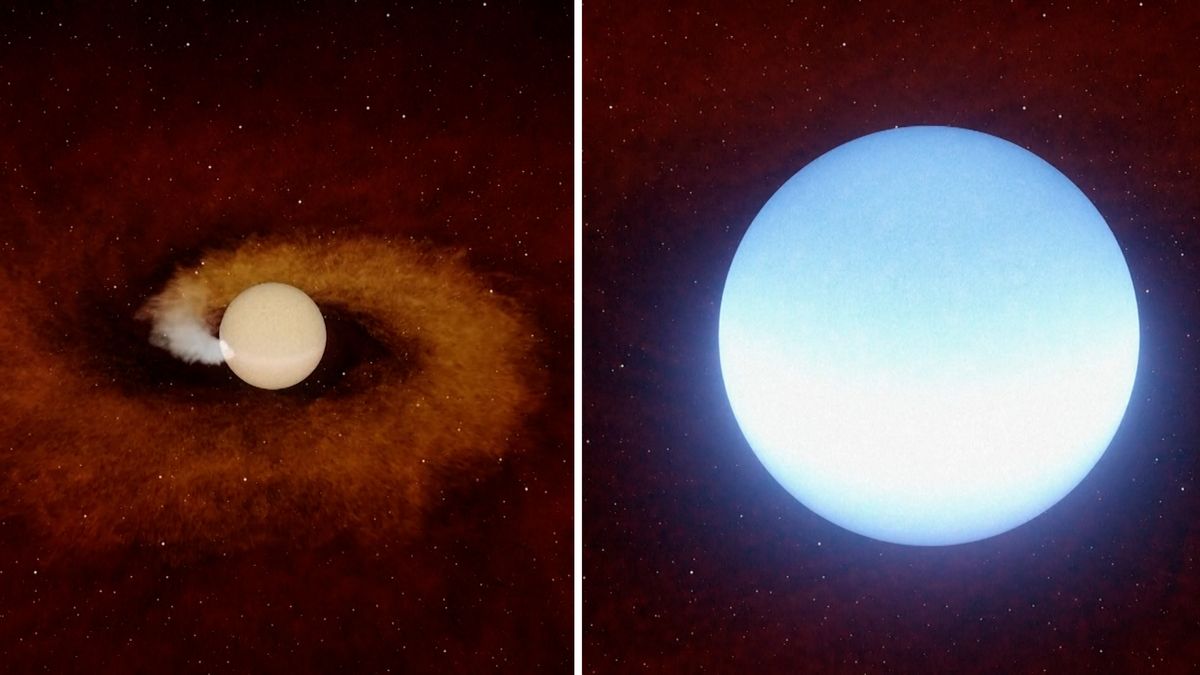The star lies about 12,000 light-years away in our galaxy and is thought to have engulfed a giant gas giant similar to Jupiter. Scientists have previously believed that old stars grow with age until they eventually “swallow” all the planets orbiting them. However, no one has yet seen this phenomenon directly.
Astronomers have now obtained another proof for their theory, which she recalled agency AP. In other words, the Earth will end up in the same way as it will be swallowed by the Sun until it becomes a so-called red giant. Fortunately, this should happen in five billion years.
Astronomers have glimpsed the fate of the Solar System
Science and schools
“Confirmation that Sun-like stars are engulfing their inner planets provides a missing link in our understanding of the fates of star systems, including our own,” noted Kishalay De of the Massachusetts Institute of Technology (MIT). De is the lead author studywhich was published in the journal Nature, where the discovery was presented.
The star was first observed using the ZTF (Zwicky Transient Facility) located at the Palomar Observatory near San Diego. Then, over the course of about a week, the star first brightened dramatically, then slowly began to fade. At first, however, astronomers had no idea what they were actually looking at.
Astronomers have taken the first image of a black hole with a shadow and a powerful jet
Science and schools
The original assumption that it was an exploding star called a nova was not confirmed by data obtained from the Keck Observatory located on the Mauna Kea volcano in Hawaii. On the contrary, she drew attention to the infrared light that the star emits even now, when the optical light has already faded.
So the scientists turned to colleagues from the US National Aeronautics and Space Administration (NASA) and used data from the NEOWISE space telescope, formerly known as WISE (Wide-field Infrared Survey Explorer), which has been observing the sky since 2009.
The star gained the energy of the planet
The new findings have led astronomers to know what they are actually looking at. The observed star grew in size during its lifetime, as it does for all other stars, and thus approached the orbiting planets.
“The planet plunged into the core of the star and was swallowed whole. In the process, the energy was transferred to the star,” De explained what happened in the sky. “The star has blown off its outer layers to get rid of its energy. That’s why it got bigger and brighter, which is what ZTF registered.”
Astronomers have explained the unexpected trajectory of the mysterious object Oumuamua
Science and schools
Part of the stellar material escaped during the expansion, and as it cooled, dust entered, the presence of which was detected by the scientists thanks to infrared light. This dust was also created during the previous gradual approach of the star and the planet, as the planet disturbed the surface of the star. That’s why NEOWISE registered the star’s infrared flare about nine months before ZTF picked up the extreme increase in optical light.
“We are still amazed that we caught a star in the process of absorbing a planet, something our own Sun does to its orbiting planets,” said astronomy professor Mansi Kasliwal, who is collaborating on the ZTF project.
An image of merging galaxies hints at what lies ahead for the Milky Way
Science and schools
2023-05-07 18:11:42
#star #swallowed #planet #glowed #time #eyes #scientists #News

